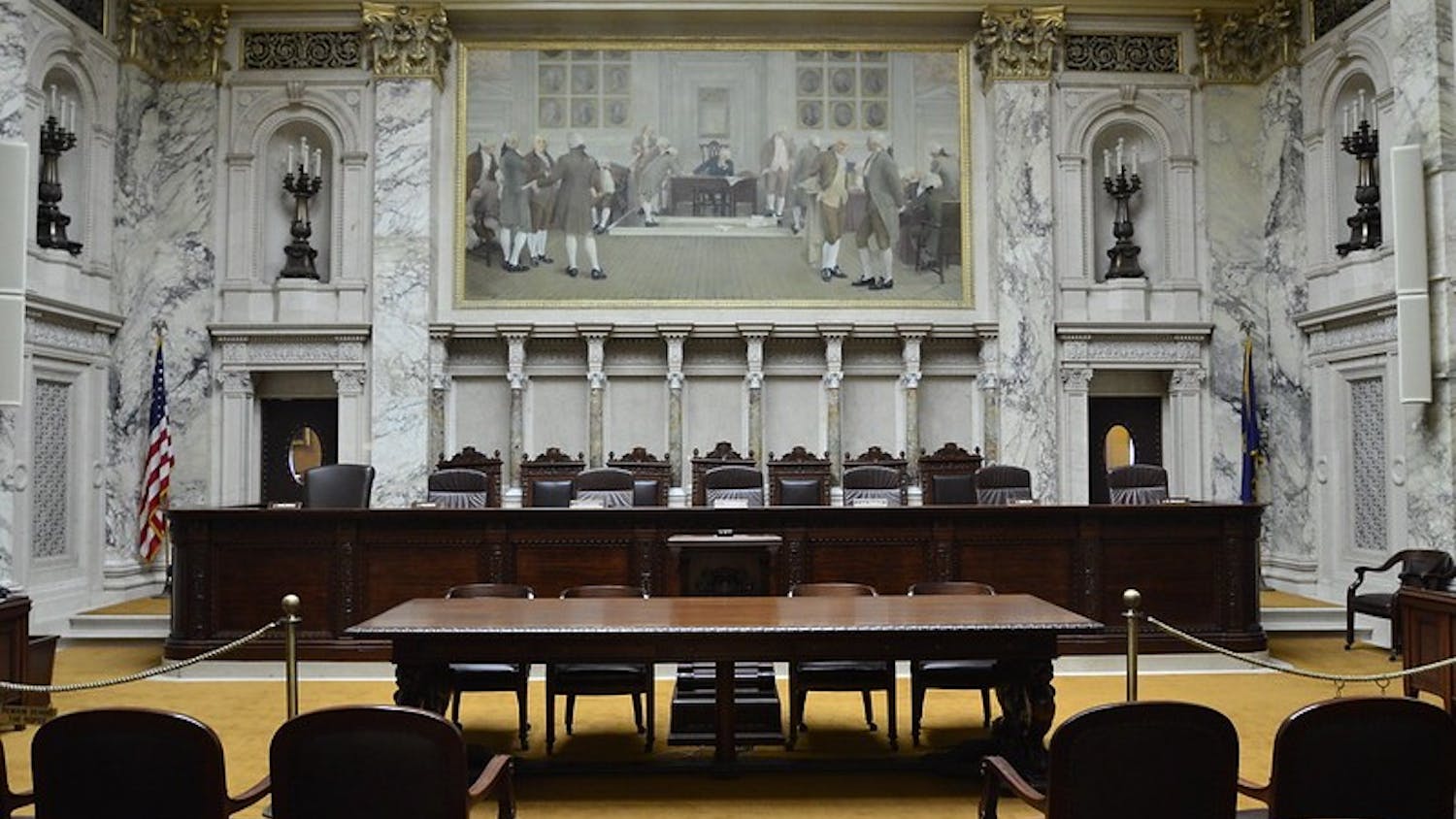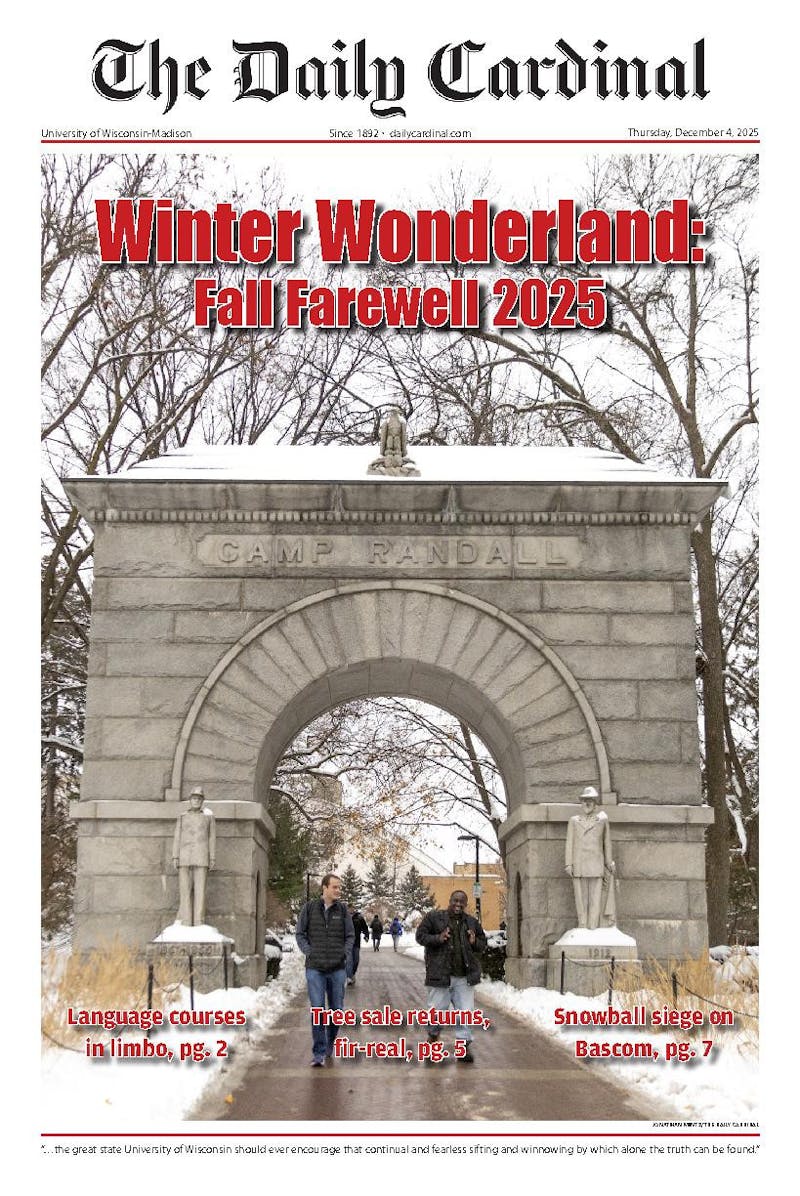The recent remake of \The Texas Chainsaw Massacre"" makes one wonder if remakes are necessary. Cardinal Arts looked at that recent release and saw that some remakes fulfilled the spirit of the original while others failed miserably. Here are a few to consider.
(1974, 2003)
Producer Michael Bay's recent retelling of the granddaddy of all horror flicks is simultaneously one of the best and worst remakes ever. Actually, it would be a truly great film if it were not for the expectations that come along with the title of ""The Texas Chainsaw Massacre.""
When the news came that Bay, better known for grandiose action films such as ""Bad Boys"" and ""The Rock,"" would be spearheading the remake, it immediately drew criticism from fans of the original. Much of the denigration came from the belief that the grittiness of Tobe Hooper's classic would be replaced with big-budget Hollywood sheen.
From the beginning of the new ""Massacre,"" it becomes readily apparent that those involved in its making were quite aware of the pressure to stay away from turning the film originally known as ""Headcheese"" into a faded image of its former self. Unfortunately, director Marcus Nispel overcompensates by cranking up the violence and gore to obscene levels. This is especially true in his reworking of the hitchhiker scene, which ironically won him his job on the picture. The sequence itself is one of the most disturbing, graphic and interestingly shot scenes in recent horror history. It is a real credit to cinematographer Daniel Pearl, who is the lone holdover from the original. The sickening explicitness, however, quickly becomes stale and nearly comical.
Sure, the original was violent and is still banned in some countries. However, the original was going for a PG rating and used very little blood or overt displays of brutality. Instead, Hooper's film keeps viewers on edge throughout the entire production by leaving them in the dark, sometimes literally, and giving very little visual payoff for the violence. As H.P. Lovecraft once stated, ""[t]he oldest and strongest kind of fear is fear of the unknown.""
""The Texas Chainsaw Massacre"" of 2003 made a number of right moves, including the brilliant casting of R. Lee Ermey as the patriarch of the deranged family. Nevertheless, it is too little to overcome Jessica Biel's performance and the number of ways the filmmakers found to get her into situations involving the cold, water and a tight T-shirt. There is also the glaring omission of the infamous dinner scene, and let us not forget that they actually show Leatherface sans mask. Is nothing sacred?
and
(1963, 2002)
In ""Charade,"" after returning from vacation, Regina Lampert (Audrey Hepburn) finds her large home in Paris empty of all her and her husband's possessions and is quickly informed by a French inspector that her husband, Charles, was found dead after falling (being thrown) from a train. Regina then meets with Mr. Bartholomew (Walter Matthau), a CIA administrator at the U.S. Embassy in Paris, who informs her that her husband stole $250,000 from the U.S. government during World War II.
""The Truth About Charlie"" is basically a shot-for-shot remake of the original, but with minor story changes. Minor differences include updating Charles' army unit to a diverse post-Gulf War special forces unit supporting a military force in Mogadishu and updating the stolen money value to $1.8 million.
But there are many problems that inhibit the remake from being as suspenseful, humorous, and enjoyably romantic as the original.??First is the casting-Mark Wahlberg is not nearly as witty or charming as Cary Grant's character. Thandie Newton, while exhibiting sex appeal, does not create the loveable and enjoyable character that Hepburn does.
While ""Charade"" is dated by 40 years in its dialogue, humor and love story, it still surpasses the remake. Although the love story of the original is a much more enjoyable and playful romance between Hepburn and Grant that develops through the movie, rather than the few sexually superficial scenes between a bursting-from-her-lingerie Newton and a shirtless Wahlberg.
(1960, 2001)
The mere existence of a remake of the original action movie ""Ocean's 11"" is a wonder. Despite a star-studded cast, the original is so slow-moving and mired in unnecessary subplots that the real plot does not get underway until halfway through the movie. As the first Rat Pack movie, it was obviously created for the actors, with various scenes suddenly turning into mini recording-artist performances. Its only strong point is its stylish portrayal of the cool cats from back in the day.
Steven Soderbergh's version of ""Ocean's 11"" makes up for everything the original lacks. It is fast-paced, action-packed and filled with crafty humor. Also very stylish, this film successfully utilizes the star power of the cast to create quick yet meaningful relationships that keep the film moving along while adding an emotional element. There is a severe suspension-of-disbelief problem when it comes to the actual caper, but with Brad Pitt, George Clooney and Julia Roberts, there is enough eye candy to distract from the impossibility of the plot.
The original ""Ocean's 11"" holds nostalgic value and is worth watching if for no other reason than to see the Rat Pack together in its heyday. However, the classy, energetic action of its modern counterpart makes for much more exciting viewing.
(1960, 1998)
Trying to take a glass-is-half-full approach, one could say that Gus Van Sant tried something new and daring by remaking ""Psycho,"" one of the cornerstones of American cinema, shot by shot. Too bad the end result is a glass-is-half-empty kind of film.
There are a great deal of things that make this movie fail, but the casting seems to be the biggest hurdle. Where Anthony Perkins brilliantly balanced charm and creepiness in the original, Vince Vaughn is just unlikable. The other actors do no better. Where Janet Leigh and John Gavin brought class and empathy to their roles as lovers who are kept down by monetary issues, Anne Heche and Viggo Mortensen come off as white trash.
The very fact that this film was even made makes one wonder if Gus Van Sant has any knowledge of what made the original a classic. Add more gore to the shower scene so the audience does not have to use its imagination? Sure. Use mismatched color schemes rather than eerie black and white film? Of course. If there is a greater sin than defiling Hitchcock's masterpiece, perhaps it is this: Van Sant enabled many a person to see his version of ""Psycho"" and not the original. Now that is scary.
(1972, 2002)
""Solaris,"" in both its original Andrei Tarkovsky version and its Steven Soderbergh remake, plays as a mediation on the essence of human memory and personality. While Tarkovsky is known predominantly by film buffs, Soderbergh's version starred George Clooney and was sold as a science fiction film. Poor marketing combined with a small audience that would truly appreciate the film resulted in a box-office failure.
Soderbergh and Clooney succeed in hitting the interesting themes from Tarkovsky's version while simultaneously chopping over an hour off the film. This allows 2002's ""Solaris"" to make you think about the philosophical issues of human identity and memory without dragging on so long that you lose interest before you leave the theater. Where Soderbergh's version seems ponderous in a good way, Tarkovsky takes so much time that it is easy to lose patience with the entire venture.
Soderbergh's version is also the beneficiary of 21st-century special effects advancement; the actual planet Solaris is mesmerizing. The real star is Natascha McElhone as Kelvin's deceased wife Rheya. Beautiful and suicidal, McElhone conveys it all with some of the most saddening facial expressions in memory.
and
(1956, 1978, 1993)
The paranoid notion of alien pods robbing people of their identities and turning them into zombies was introduced by Jack Finney in his novel ""The Body Snatchers"" and immortalized in Don Siegel's 1956 movie version, ""Invasion of the Body Snatchers."" The movie is a classic that seems as relevant today as it did when it first came out and was seen as a criticism of the McCarthy-era witch hunts. It has since inspired two remakes.
Adding an element of dark comedy to the mix, Philip Kaufman's 1978 ""Invasion of the Body Snatchers"" is arguably one of the most successful remakes ever made. Kaufman's version is a freaky, funny satire of the ""me"" generation and the New Age cult of the '70s. The special effects are top-rate and the ominous, spine-tingling squeals the pod people let out to signal the presence of outsiders are unforgettable.
The underrated 1993 version, simply titled ""Body Snatchers,"" sets the action in a military base in Alabama. In the most memorable scene, Meg Tilly chillingly asks her husband, ""Where will you go? Where will you hide? There is no one like you left."" As in the 1978 version, the updated special effects add to the menacing atmosphere.
and
(1934, 1998)
To look at ""Death Takes a Holiday"" and ""Meet Joe Black"" is to view Hollywood's attempt at accepting morbidity in two eras. In ""Holiday,"" Frederic March brings Death to the screen with an awkward and almost-aloof detachment. With ""Black"" Brad Pitt embodies Death as a distant but genteel man.
The premise of both movies is that Death comes to earth for a few days to see what living is all about. He befriends a successful man and enjoys all the benefits and excesses of wealthy living. Death disguises himself as an old friend and soon falls in love with the daughter of the rich man.
In this case, the original is equal to its contemporary counterpart. While March cannot convey Pitt's intensity in silence, he compensates with supreme mastery of slight motions and well-timed pauses. March and Pitt both embody a type of dignity that goes beyond their screen presence and into their gazes and gestures.
Fortunately, ""Meet Joe Black"" did exactly what a remake is supposed to do: It carried the story and its characters into a new era without sacrificing its style and mood. The original was transformed, but not transfigured.





